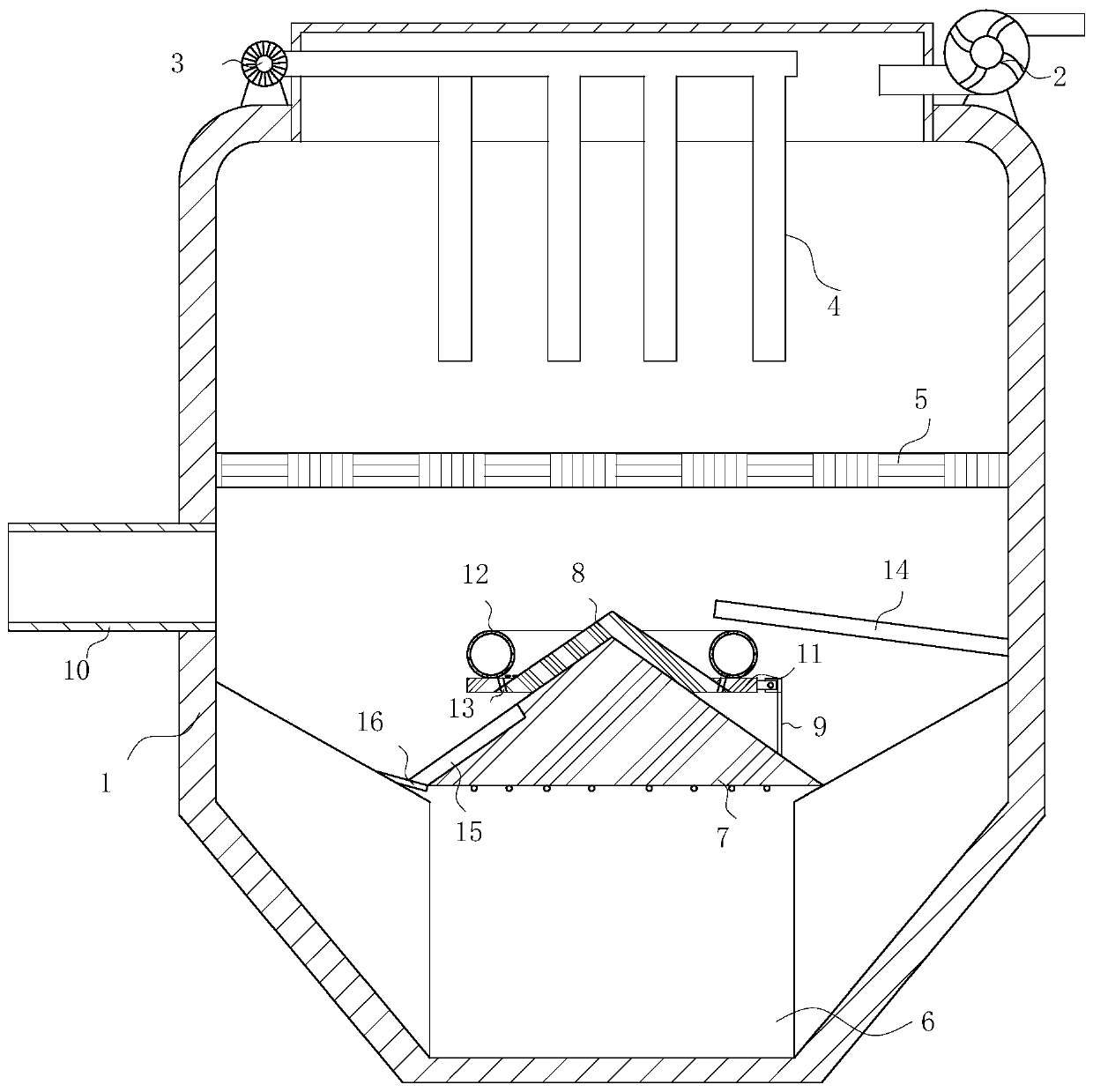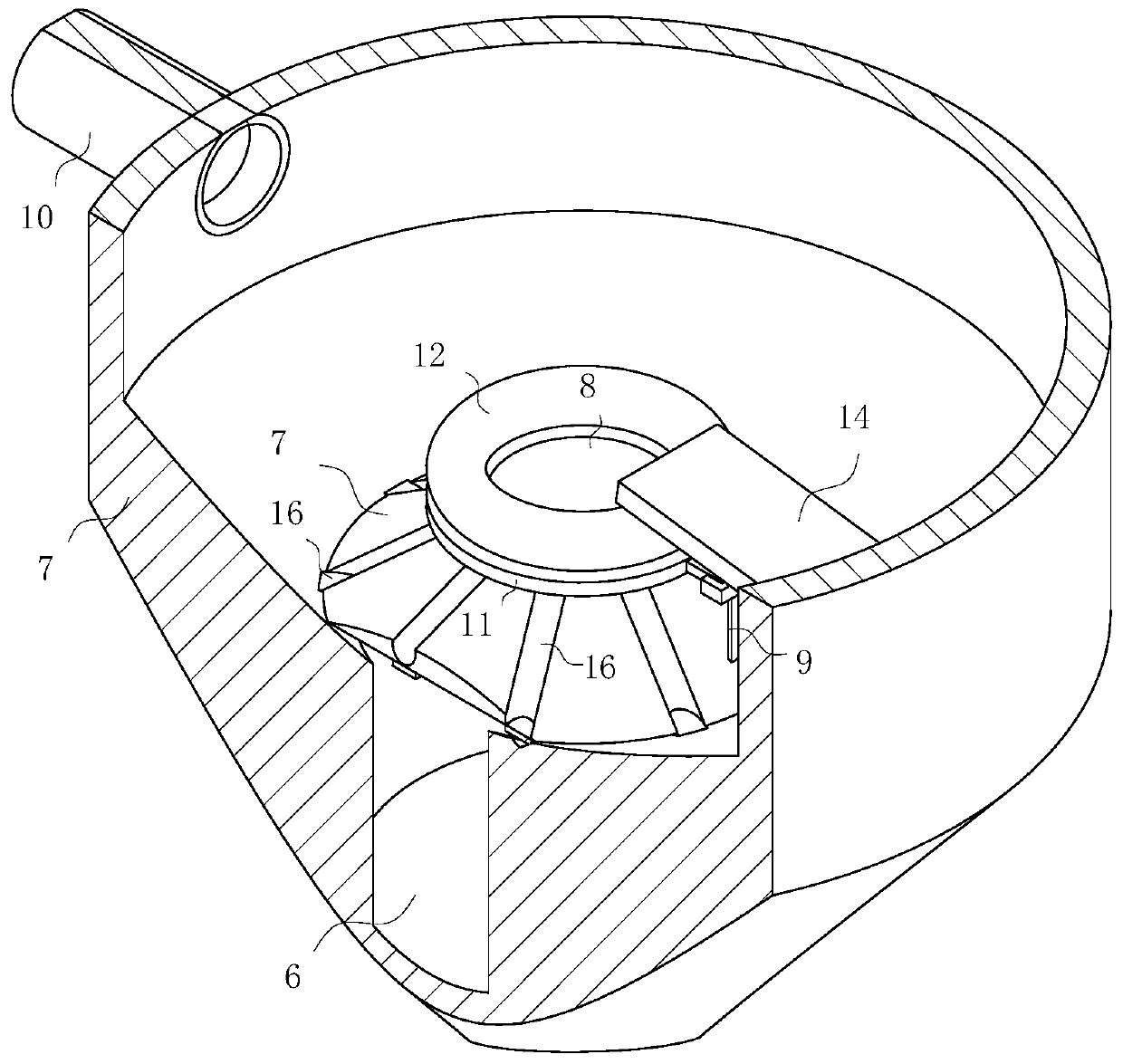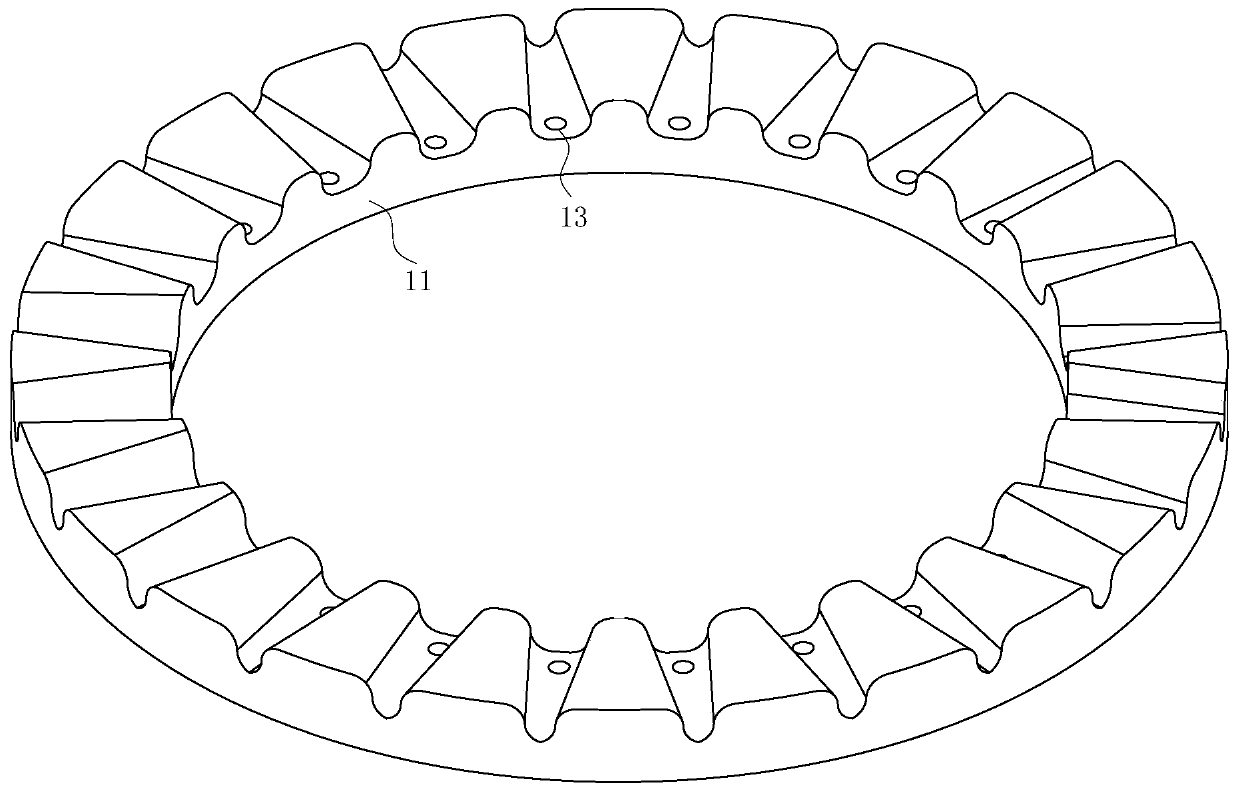Industrial dust remover
A technology of industrial dust collector and body, applied in chemical instruments and methods, dispersed particle separation, dispersed particle filtration, etc., can solve problems such as reducing dust removal effect
- Summary
- Abstract
- Description
- Claims
- Application Information
AI Technical Summary
Problems solved by technology
Method used
Image
Examples
Embodiment Construction
[0019] In order to make the technical means, creative features, goals and effects achieved by the present invention easy to understand, the present invention will be further described below in conjunction with specific embodiments.
[0020] Such as Figure 1-3 As shown, an industrial dust collector according to the present invention includes a body 1, a fan 2 is arranged on the top of the body 1, a pulse valve 3 is arranged on the top of the fan 2, and a blowing pipe 4 is connected to the pulse valve 3 The middle part of the inner side of the body 1 is provided with a filter bag 5, the bottom of the body 1 is provided with a collection chamber 6, and the top of the collection chamber 6 is provided with a main cone 7, the bottom edge of the main cone 7 does not contact the inner wall of the body 1, and the main cone The top of the disk 7 is sleeved with an auxiliary cone 8, and one side of the auxiliary cone 8 is hinged with a connecting rod 9, and the bottom end of the connect...
PUM
 Login to View More
Login to View More Abstract
Description
Claims
Application Information
 Login to View More
Login to View More - R&D
- Intellectual Property
- Life Sciences
- Materials
- Tech Scout
- Unparalleled Data Quality
- Higher Quality Content
- 60% Fewer Hallucinations
Browse by: Latest US Patents, China's latest patents, Technical Efficacy Thesaurus, Application Domain, Technology Topic, Popular Technical Reports.
© 2025 PatSnap. All rights reserved.Legal|Privacy policy|Modern Slavery Act Transparency Statement|Sitemap|About US| Contact US: help@patsnap.com



